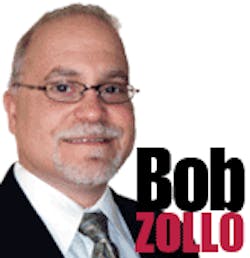Smart, Green Power Drives Changes In T&M Power Supplies
Power supplies are moving toward high efficiency to be green and to simplify product design. If the power supply is highly efficient, it doesn’t generate heat, meaning it can be smaller and won’t adversely affect the thermal design of the product in which it is embedded. Efficient power supplies are switching power supplies with increasingly higher switching speeds.
Another general trend is toward smart power, with integrated telemetry and remote control. Telemetry from the device’s power-management system can provide input data that is then used to control the device to better manage power through its remote interface. To realize this monitoring and control, the embedded power supply is getting smarter through higher integration and the use of FGPAs and ASICs, which reduces parts count and increases functionality.
Key Applications
The automotive industry is trending toward higher voltage to support electric vehicles (EVs) and reduce weight. (Higher voltage means lower current, which means less copper, which means less weight.) For computing, where server farms require enormous amounts of power, gains in efficiency mean not only reducing the electric bill to run the computing equipment, but also reducing the costs to run the air conditioners.
Savings can be realized with direct dc power distribution, which eliminates losses when high-voltage ac is stepped down and converted numerous times before it gets to the CPUs. Home dc distribution isn’t far behind for the same reasons.
In consumer electronics, we want our gadgets to be battery powered. Semiconductor companies, then, will be designing and producing more and smarter dc-dc converters so our single battery voltage can be converted to optimal voltage to run each subsystem within these battery-powered devices.
Lastly, there will be more solar and alternate energy sources that require specialized power conversion equipment to derive power not from ac but from solar panels, fuel cells, and mechanical sources such as wind and hydro.
Today’s Trends
Several trends in the industries we serve are driving changes in power supplies used for test:
- Electrification of cars: Systems within cars that have traditionally been mechanical are moving to electrical, driven by electric and hybrid vehicles.
- Everything is battery powered: We want mobility, so we want powerful devices that run on batteries. It means battery advances and improvements in power management to benefit from every last electron in the battery.
- Data everywhere: Along with our mobility, we want to have access to communications, the Internet, the cloud, video streaming, gaming, and more. We want mobile devices, so we need infrastructure like basestations, satellites, and server farms.
- Increased functionality on chips: The only way to get mobile devices that are highly functional is to drive much higher integration at the chip level.
- Energy conservation/alternative energy: New sources of energy need to be monitored and controlled to maximize efficiency.
So what does all that mean for test and measurement power supplies?
The Next Step
First, we need a way to test and prove that we’ve made efficiency improvements. Digital multimeters (DMMs) can measure voltage with extreme accuracy, but measuring current accurately has been a challenge. As we move forward, engineers will need to measure current more accurately, and we test equipment providers will have to step up to that challenge.
Built-in measurements in power supplies will have to improve. One area in particular will be measuring the sleep currents of devices that conserve power by going to sleep. Device currents experience a wide dynamic range from full operating current to sleep current, driving the need for the power supply to be able to both source and measure this wide dynamic range of current.
As people become accustomed to having data everywhere, users want to have wireless instruments and apps to control them. Now the power supply can’t be wireless, but a power-supply remote user interface that appears on the user’s smart phone is becoming a reality.
If more devices are becoming battery powered, then test and measurement power supplies will have to act more like batteries. Look for power supplies that can source current, like a battery supplying current into a battery-powered device, and sink current, like a battery absorbing current during recharge from its host device.
With increased functionality on chips, power supplies used to test those chips will need to change as well. Chip voltages are going down and currents are going up, so low-voltage, high-current sources will be needed. These chips will need more functional testing, so power supplies capable of functional test will be needed. These supplies will need to be fast and offer outputs that can be sequenced and synchronized with other parts of the functional tester.
With the trend toward alternate energy, power supplies that simulate the output of solar panels will be needed to test inverters. If the device under test can source power, like an inverter or a dc-dc converter, the test system may want to take that output power from the device under test and reuse it through regeneration or recirculation rather than simply dissipating it as heat, which is 100% inefficient.
Bob Zollo is a product planner with the System Products Division, Electronic Measurements Group, at Agilent Technologies. He is responsible for creating Agilent’s power products roadmap by researching customer and industry trends and developing product plans to meet emerging customer needs. He holds a degree in electrical engineering from Stevens Institute of Technology in Hoboken, N.J.
About the Author
Bob Zollo
Solution Architect for Battery Testing, Electronic Industrial Solutions Group
Bob Zollo is solution architect for battery testing for energy and automotive solutions in the Electronic Industrial Solutions Group of Keysight Technologies. Bob has been with Keysight since 1984 and holds a degree in electrical engineering from Stevens Institute of Technology, Hoboken, N.J. He can be contacted at [email protected].

